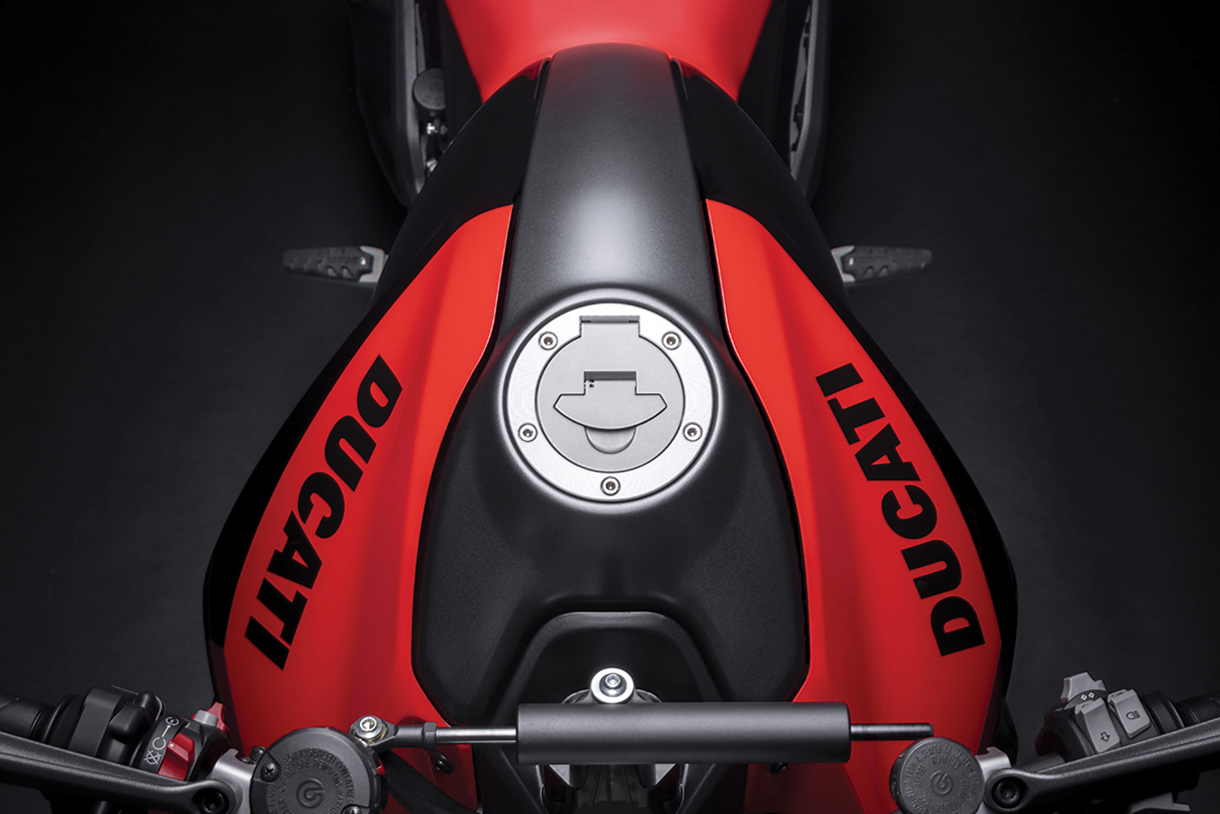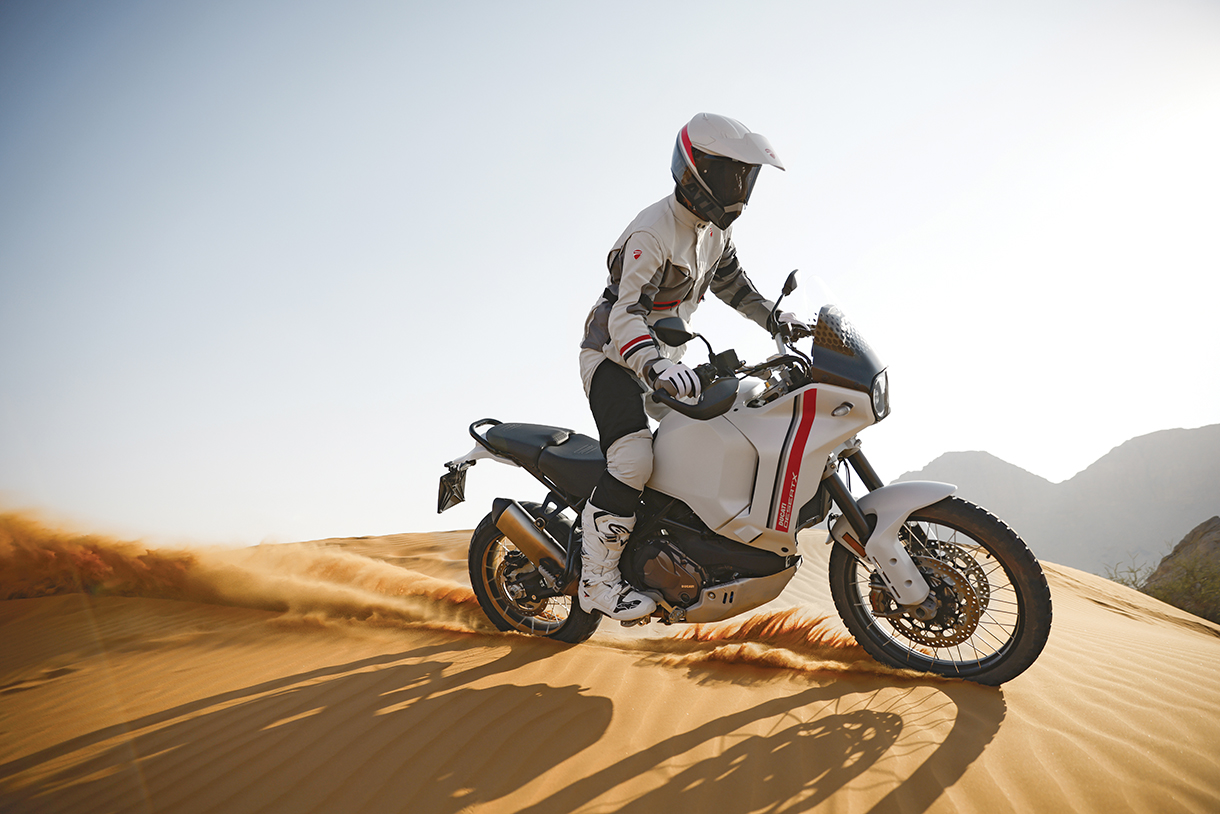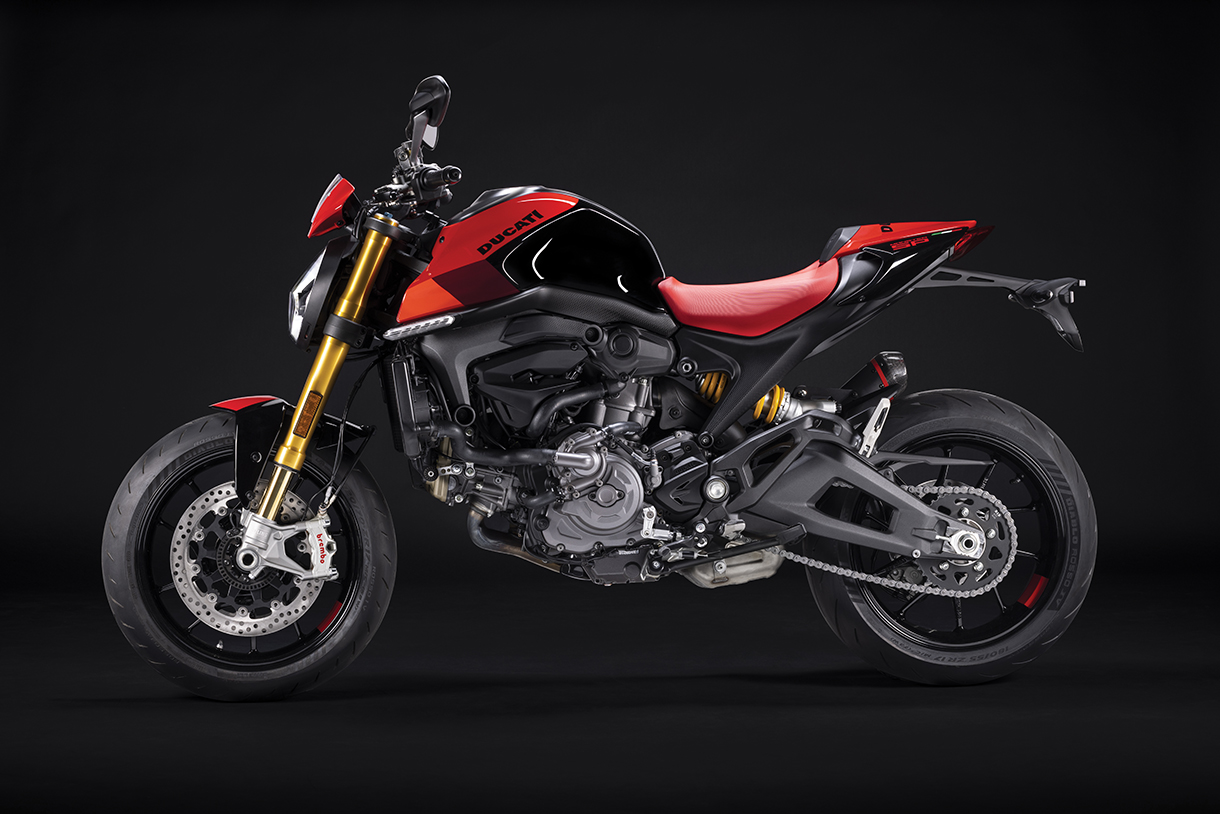
The redesigned Ducati Monster
Vehicles
Ducati’s New DesertX and Redesigned Monster Bikes are Italian Two-Wheeled Pieces of Art
BY DAVID KEITH
When you see a Ducati motorcycle, you cannot help but want to touch it. You want to run your fingers along the lines, straddle the seat, and otherwise be a part of it. As Andrea Ferraresi, Ducati’s head of design, says, “Ducatis are sensual, not just beautiful. If people must touch the bike, sit on it, we’ve achieved our results.”
Ducatis are often described as the Ferraris of the motorcycle world. But the title, while complimentary, is inaccurate: Ducati Motor Holding S.p.A is actually owned by Lamborghini, which is owned by Audi, which in turn is part of the Volkswagen Group. What this means, aside from interesting corporate board meetings, is that Ducati benefits from technology that trickles down from VW’s other subsidiaries, such as Porsche and Bentley. Electronics that have worked their way into Ducatis include wheelie control, advanced ABS systems, and even traction control. Add in modern design and manufacturing processes, and you end up with a sexy, reliable, two-wheeled piece of art.
In order to make their motorcycles functional and beautiful, Ducati designers work closely with engineers from the beginning of the process. Unlike a car (where most of the working parts are covered by bodywork), on a motorcycle, everything is in view. Ferraresi upholds that Ducati bikes be authentic, sensual, and recognizable as ambassadors of “sporty Italian beauty.” With the recent release of the redesigned Monster and the new DesertX off-road motorcycle, Ducati’s designers and engineers have hit their respective targets, both in looks and in performance.
Ducatis are often described as the Ferraris of the motorcycle world. But the title, while complimentary, is inaccurate: Ducati Motor Holding S.p.A is actually owned by Lamborghini, which is owned by Audi, which in turn is part of the Volkswagen Group. What this means, aside from interesting corporate board meetings, is that Ducati benefits from technology that trickles down from VW’s other subsidiaries, such as Porsche and Bentley. Electronics that have worked their way into Ducatis include wheelie control, advanced ABS systems, and even traction control. Add in modern design and manufacturing processes, and you end up with a sexy, reliable, two-wheeled piece of art.
In order to make their motorcycles functional and beautiful, Ducati designers work closely with engineers from the beginning of the process. Unlike a car (where most of the working parts are covered by bodywork), on a motorcycle, everything is in view. Ferraresi upholds that Ducati bikes be authentic, sensual, and recognizable as ambassadors of “sporty Italian beauty.” With the recent release of the redesigned Monster and the new DesertX off-road motorcycle, Ducati’s designers and engineers have hit their respective targets, both in looks and in performance.

The new Ducati DesertX
Ducati DesertX
Standing tall with a 34-inch seat height, the DesertX’s blocky tank and bodywork with slightly softened angles make it look every bit the part of Ducati’s version of a Paris-Dakar rally bike, while the LED headlights add a modern, almost futuristic touch. Ducati’s previous adventure bikes, such as the MultiStrada, were essentially street bike chassis reverse-engineered for off-road use. The DesertX, on the other hand, was designed from the ground up as an off-road machine, with some street-related functions added in later.The DesertX electronics package includes Bluetooth and there’s upgraded ABS cornering, with lean angle sensors, traction, and wheelie control, along with six customizable riding modes and Ducati’s quickshift (clutchless gear shifting between second and sixth gears). An optional rally-style rear fuel tank adds 2.1 more gallons of fuel to the fire.

The redesigned Ducati Monster
Ducati Monster
Although history is important for Ducati in considering new designs, technical issues also have a priority. According to Ferraresi, he must balance deference to history with technical innovation in a way that keeps the design faithful to the brand’s heritage, while also pushing performance forward. This struggle was front and center in the uproar surrounding Ducati’s replacing the Monster’s steel trellis frame for an aluminum front frame, saving 4.5 kilograms in weight compared to the 821 model, and making the frame and the motorcycle more compact and more agile. To many Monster-owning Ducatisti, the change was heretical. The online forums exploded with chats, and the volleys back and forth grew heated. Imagine the “Ford vs. Chevy” debate, but in Italian, and with harsher language. Ferraresi understood the traditionalists’ anger, but noted that if the design can be improved, “we must catch this possibility”; to him, the furor was worth it for the weight savings.Moving forward, the designers at Ducati are keeping sustainability issues in mind. Italian law requires the use of recycled material in motor vehicles, and Ducati is working to incorporate recycled plastics in fairings and other body pieces. Racing experience helps the engineers tweak aerodynamics, reduce emissions, and lower fuel consumption; these savings quickly move into the production bikes to make them more environmentally friendly. Ducati’s investment into e-bike racing provides the same benefit; while a consumer e-bike is not yet in production, the racing series is providing engineering and design know-how that will make an e-bike a first for Ducati, with the performance, style, and handling the Ducatisti would expect.
According to Ferraresi, Ducati owners don’t buy their motorcycles just to ride them. The bikes are fast-moving pieces of art that grant their owners a ticket to an exclusive club. For Ducati, the design and engineering process must create a motorcycle that is not only thrilling to ride but is also beautiful to look at. Every detail, from engine noise to seating position, must remind the rider they are on a Ducati. Ferraresi’s target remains simple: When you sit on a Ducati, even if you are blindfolded and the engine is off, you will know you’re on a Ducati. Nothing less will do. ducati.com




